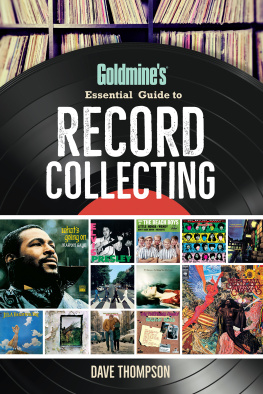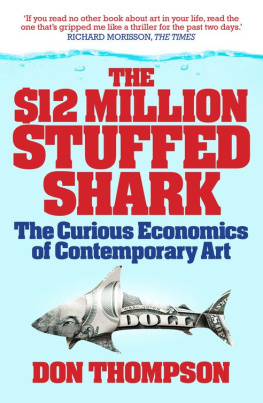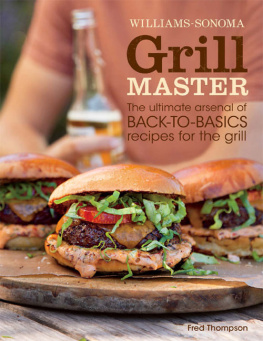Contents
Guide
Goldmines
Essential Guide to
RECORD
COLLECTING
DAVE THOMPSON
CONTENTS

The Beatles are a nice start to any collection.
Courtesy Capitol Records
INTRODUCTION
THE BIRTH OF
RECORD COLLECTING
PEOPLE HAVE BEEN COLLECTING RECORDS for as long as there have been records to collect.
In 1890, just a few years after Thomas Edison first marketed the wax cylinders that were the precursors of all that has been wrought since then, he also published the first catalog of available releases.
It was, admittedly a slender volume, but it included not only his companys releases, but also those produced by Columbia, the only other major player in town. And from these two innovationsone that might be all-but unrecognizable to the modern collector, another that would prove instantly familiarthe modern world of record collecting was born.
Cylinders were replaced by 78s, which in turn were supplanted by 45s and LPs. Rival formats (cassettes, eight tracks, CDs and mp3s) all came and went, and some of them had the temerity to come back again. Through it all, however, Edisons basic conceptof a piece of material, be it wax, shellac or vinyl, from which a stylus extracted the sounds of a performanceremains the most constant, and beloved, of them all.
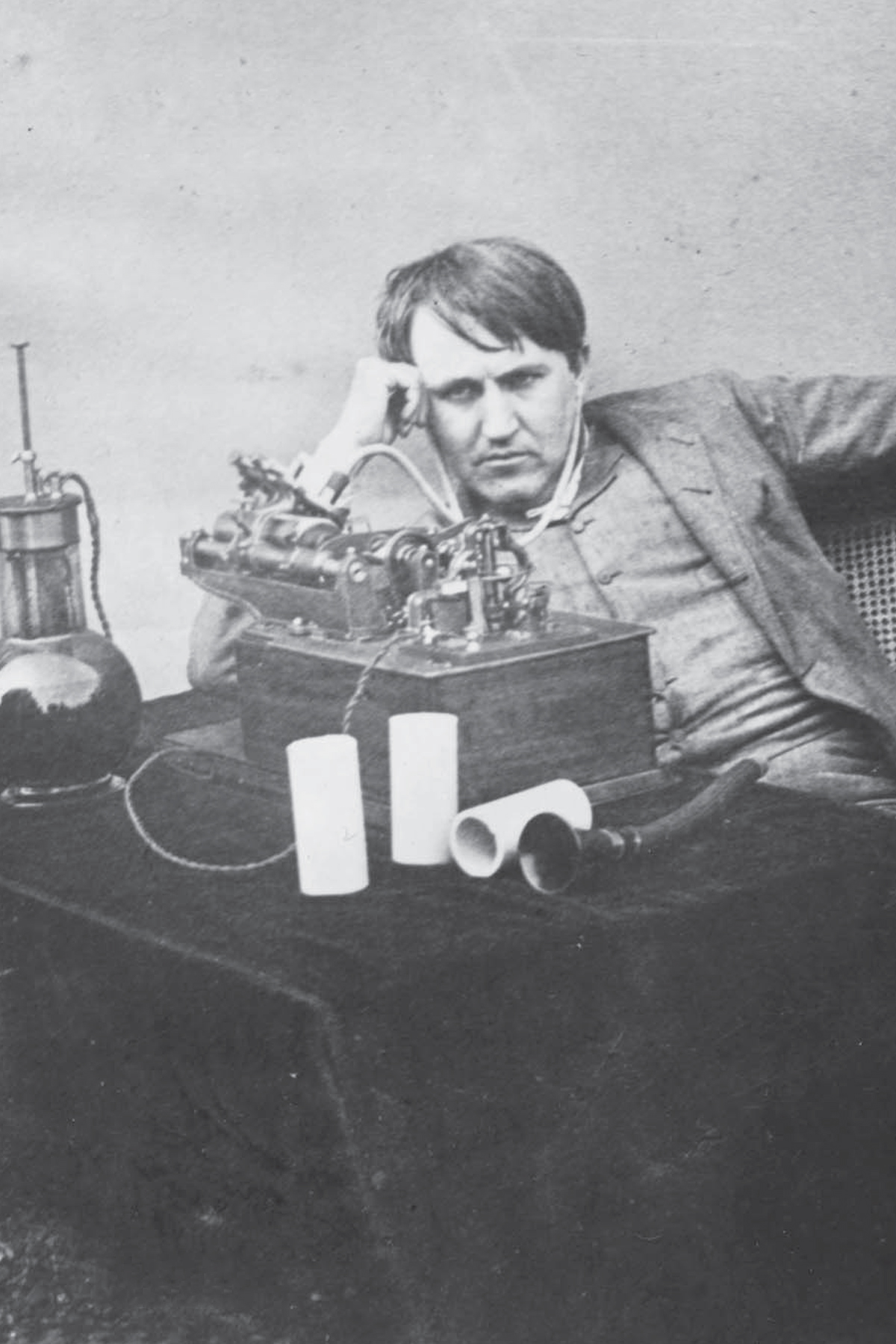
Thomas Edison listening to a wax cylinder phonograph at the Edison laboratory, Orange, New Jersey, 1888.

The patent drawing for Thomas Edisons phonograph, May 1880.
The 78, the format that initially displaced the cylinder, was the invention of German-born Emile Berliner. Coming to the US in 1870 at 19, Berliner never saw Edisons fragile, bulky cylinders as anything but a first draft in the race to create the perfect musical medium, and he was correct. Easily broken, cylinders also wore out after just a few plays, until it was impossible to hear what was supposed to be on them.
Convinced that a more permanent medium must exist, and experimenting through the 1880s, Berliner unveiled the prototype of his flat disc in 1888 at the Franklin Institute. His earliest experiments involved etching the records contents into zinc, using chromic acid. He then turned to celluloid and rubber, before finally settling upon shellac in 1891, and his work was complete. Shellac remained the industry standard for the next half-century.
And collectors have been collecting all along.
The fascination, of course, should be familiar to everyone. Collecting is as much a part of the so-called human condition as any other instinct, even if it has not always been recognized as such. What was Noah if not the first collector, gathering together two of every living creature, thousands of years before the Swedish scientist Carl Linnaeus set about formally naming them?
What were the Brothers Grimm if not collectors of every folk tale they could find in their native Germany?
The antiquaries of the 17th century collected relics of the past, be they books, coins, manuscripts, jewelry, ornaments, whatever, and from those enthusiasms, the attendant modern hobbies developed.
Harvard Professor Francis J Child collected ancient English and Scottish ballads, and published five volumes of them, filled with every different version of each song he could find.
The moment the first postage stamps appeared, people began to collect themfamously, the first stamp ever issued was Great Britains Penny Black, in 1840, and it would be almost a year before a second one came along. And perhaps youre thinking that wouldnt make much of a collection; one stamp.
But the stamps were printed in sheets of 240, and each of those 240 had a different pair of letters printed in the bottom corners. One stamp becomes 240. Eleven different printing plates were employed, each with its own minute variations240 stamps become 2640. One of those prints was damaged and needed to be repaired. More variations. One stamp becomes almost 3,000.
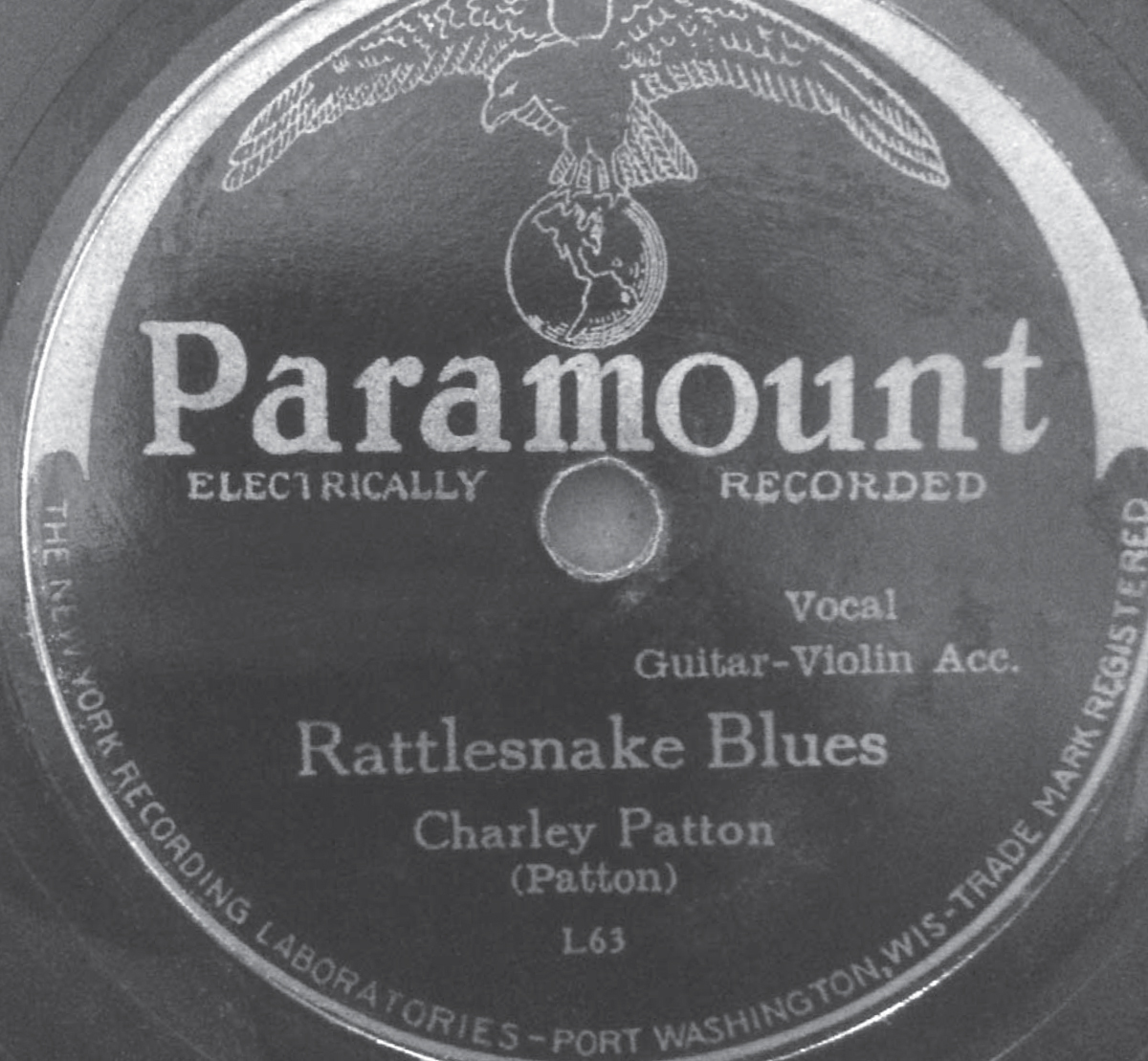
That is how collecting works, and that is how collectors think. Every different variety of a stamp. Every different issue of a magazine. Every different painting by an artist. In novelist Iain Sinclairs White Chapell Scarlet Tracings, we meet a bibliophile who is pursuing every edition of the Sherlock Holmes novel The Sign of Four that has ever been published. And in the documentary Desperate Man Blues, we meet Joe Bussard, who seems to be hunting down every old time music 78 ever made.
Whether stamps, Sherlock Holmes, or even 78s, there is joy in the pursuit. With record collecting the same rings true. There is joy in the hunt, the history, the treasure, and, must importantly, in the music. We will explore all of that, and more, in the following pages.
CHAPTER 1
EDISON vs BERLINER
ANOTHER FORMAT WAR
THROUGHOUT THE LAST YEARS OF the 19th century, and into the first decades of the 20th, record collecting, and production, continued to grow. By 1924, when Thomas Edisons eponymous record label published the latest catalog of its own releases, the seven-by-five inch catalog totaled almost 500 pages and was an inch thick.
It also detailed, as so many catalogs do, then and now, the advantages inherent in its product or, as it was described therein, Thomas A Edisons Re-Creation of Music

Edison ditched his beloved cylinder for a thick disc and thus began the music format wars.
Image courtesy Library of Congress
Cylinders were dead, but Edison was not disheartened. Presaging the format wars that would later see VHS vanquish Betamax, cassettes kill off 8-Tracks and mp3s fend off so many rival digital formats, Edison never forgave flat 78s for upstaging his cylinders, and responded in exactly the manner you would expect him to. By launching a rival disc, as flat as a 78, but thicker and, or so he boasted, better quality, too.
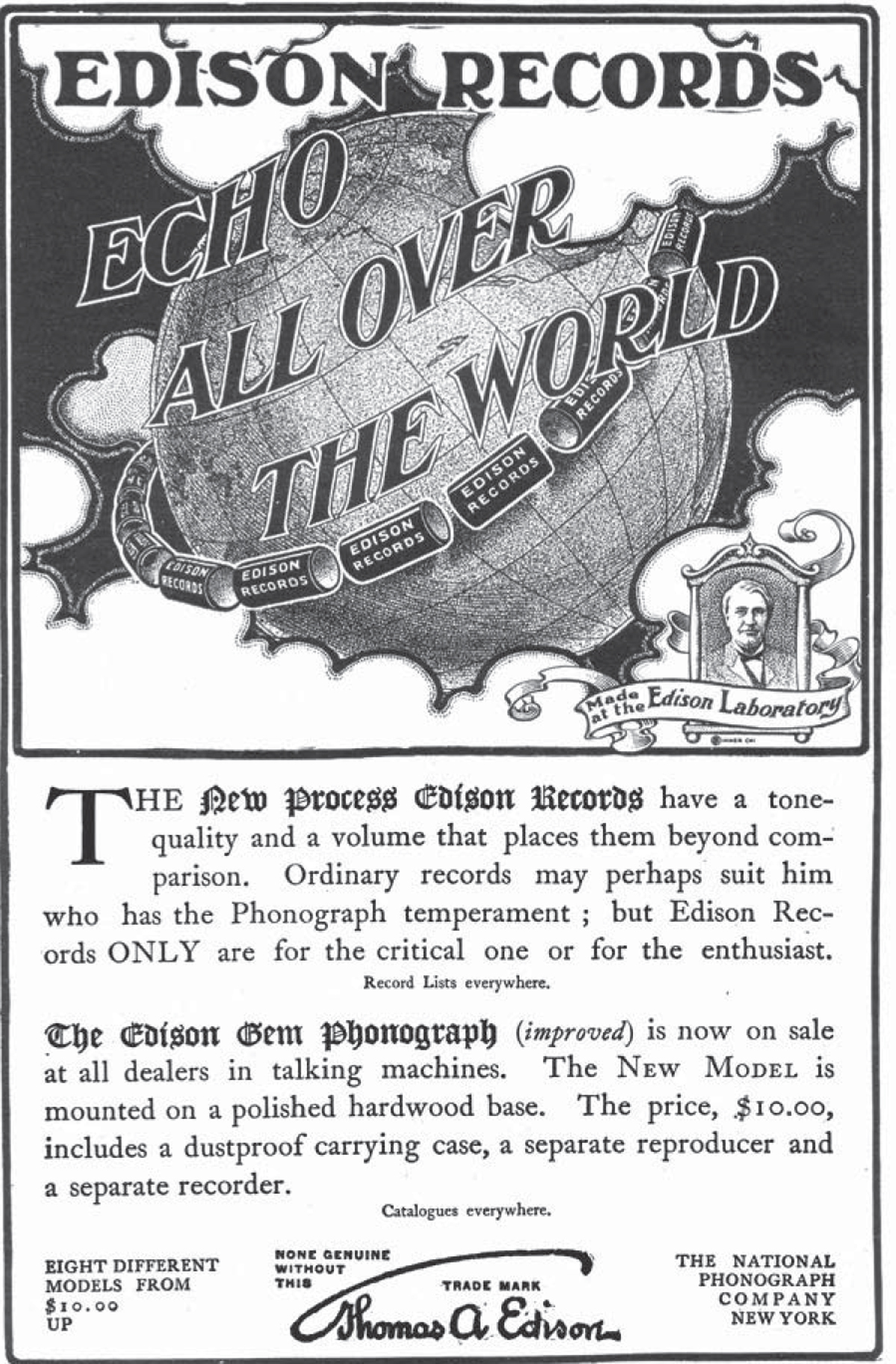
According to his catalog, Edison Records are essentially different from talking-machine records [as he termed 78s]. They are true representations of vocal and instrumental music as produced by living artists. They are not mere shadows. They are the very substance of the living music, alive with all the emotions of the living artist. They are produced through a medium, not by it.
All of which was true. But, by the end of the decade, they had been discontinued. Only the collectors cared for them now.
They still do and, although there are not hordes of people searching for them, those that are remain seriously dedicated. For the rest of us well, you rarely see Edison discs and, even when you do, youre more likely to remark upon their size (oh my goodness, that record must be a quarter of an inch thick!) than you are their contents (Oh cool! Vernon Dalmarts The Wreck on the Southern Old 97.)

